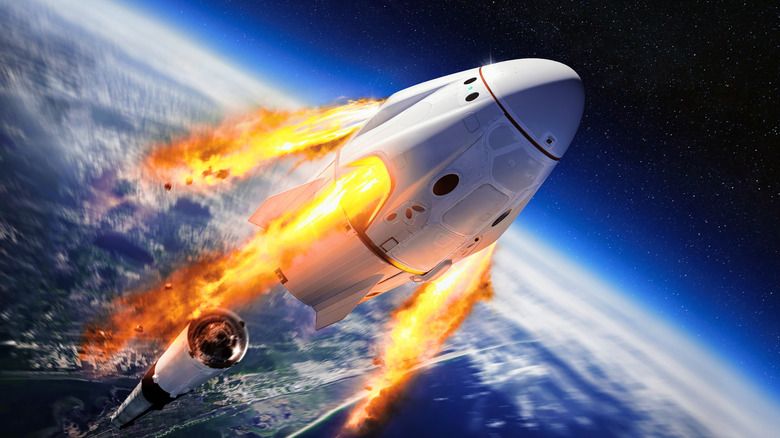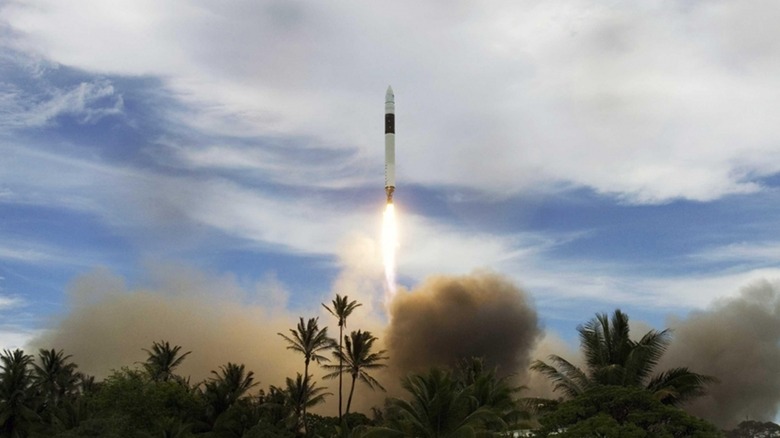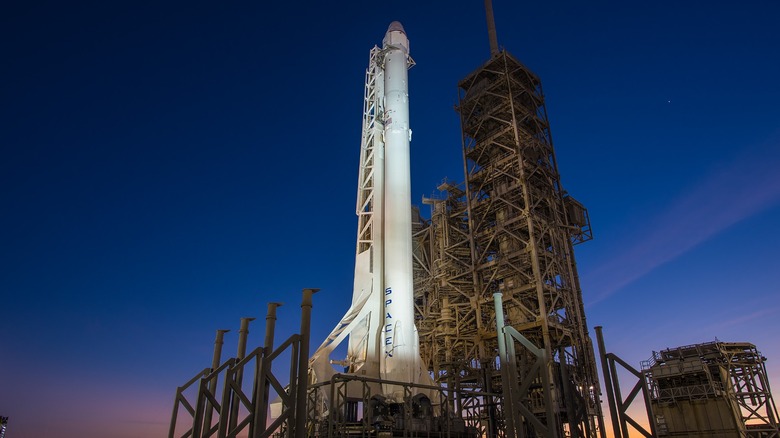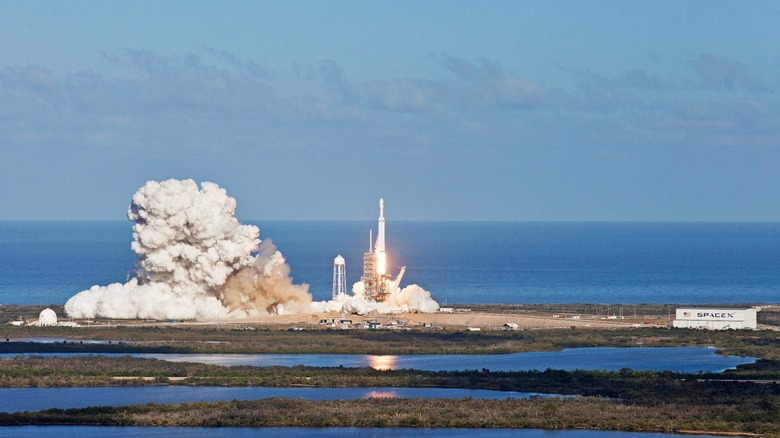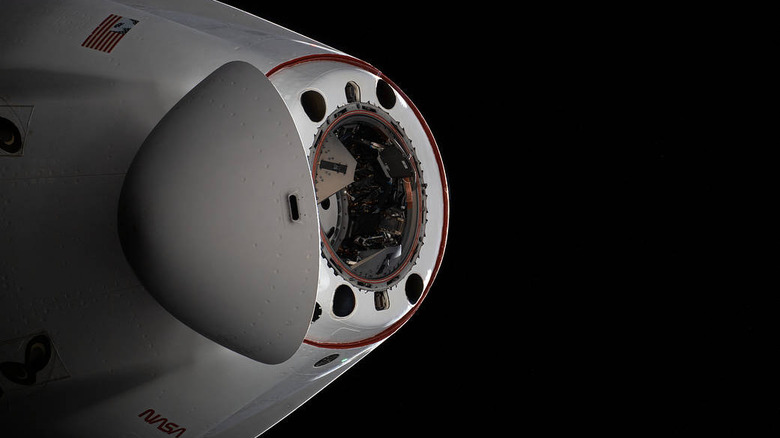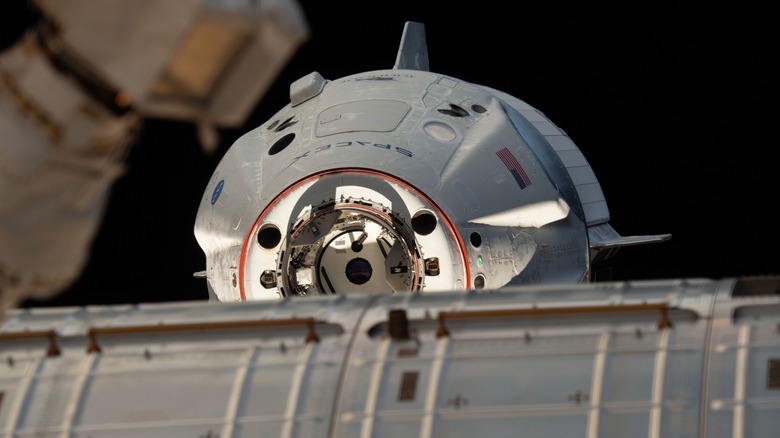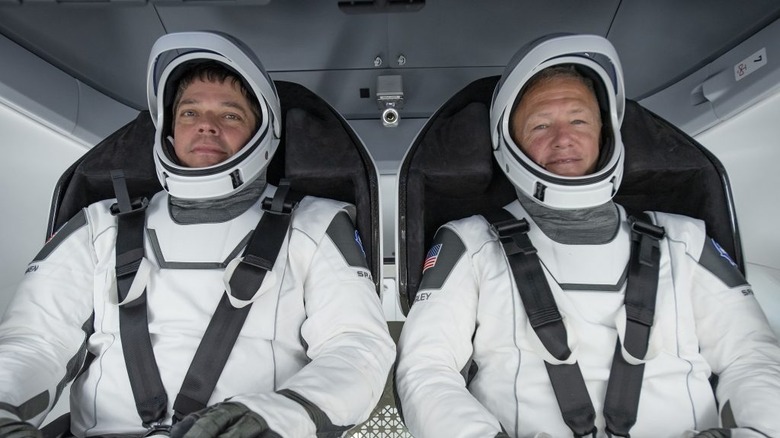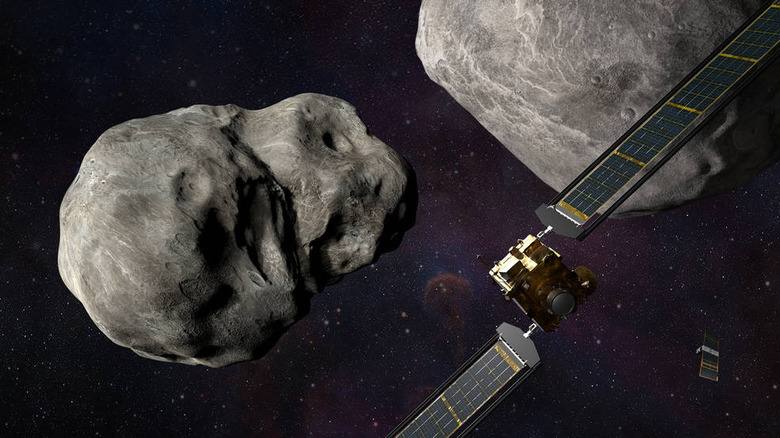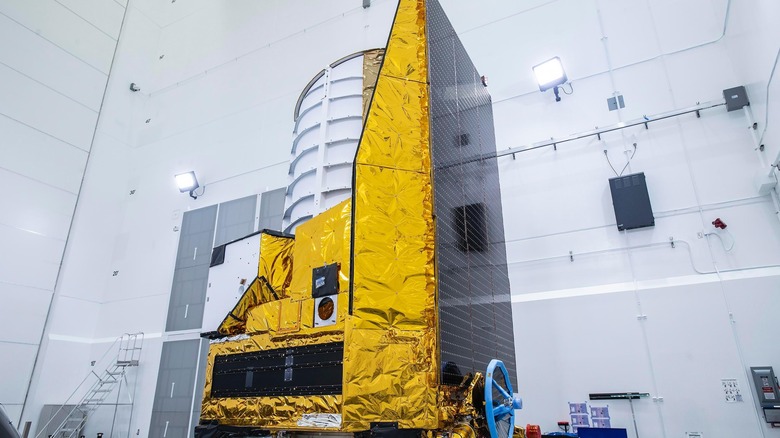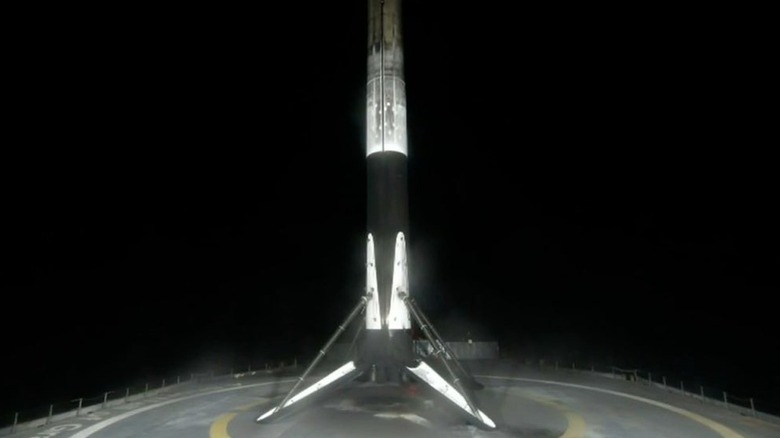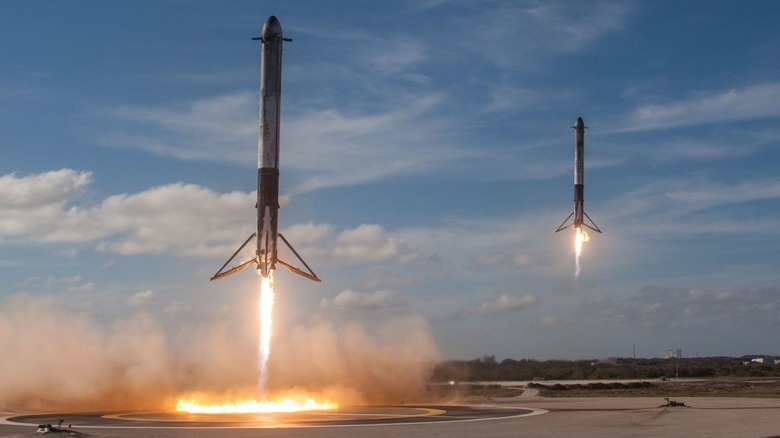The 10 Most Important SpaceX Missions Of All Time, Ranked
It's been more than half a century since humanity first slipped the bonds of Earth's gravity and drifted into the space beyond our world. For the majority of that time, space travel has largely been the domain of space agencies operated by world governments. For the last couple of decades, a number of private companies have promised to bring spaceflight to the masses. Visions of commercial space flights and space hotels are perpetually five years out of reach.
To date, no company has made good on the utopian vision of accessible, egalitarian spaceflight and it's unlikely it will happen anytime soon. In the meantime, however, SpaceX has been succeeding where other companies have failed. Since its founding in March 2002, the company successfully designed, built, and tested its own launch vehicles. SpaceX has completed hundreds of launches carrying test payloads, cargo, and crew into orbit.
Over the last two decades, SpaceX has hit speed bumps and missed deadlines. They've had to adjust timelines but that's not atypical in spaceflight, and they've always come back strong to hit their target. In just 20 years, SpaceX went from a fledgling spaceflight company to one of the major players in modern spaceflight.
Along the way, SpaceX has carried out hundreds of missions, but the following 10 are some of the most important.
First orbit of Falcon 1
In 2008, SpaceX (then commonly known by its longer name Space Exploration Technologies Corp.) was a fledgling spaceflight company that had not yet successfully achieved orbit. Six years after the company's launch, engineers had successfully developed and tested their first launch vehicle, the Falcon 1, but they failed to reach orbit. The first test ended in a fire and the last two launched successfully but didn't reach the required altitude. By September 2008, the company had three launches under its belt and just as many failures.
Elon Musk, the company's CEO, reportedly invested $100 million of his own personal fortune in the company, enough to cover the cost of the first three launches. The idea was that a successful launch would net the company lucrative contracts which would keep it afloat. Musk scraped together enough money to support a fourth and final launch, this time for all the marbles. In a 2013 speech, Musk alleged during a speaking engagement at a Google for Startups event that if the fourth launch failed, his company would have had to likely shutter its doors for good.
Instead, on September 28, 2008, at approximately 4:15 PM PT, a Falcon 1 rocket lifted off from the Reagan Test Site on Omelek Island about 2,500 miles southwest of Hawaii. The rocket carried a 135 kilogram (365 pounds) simulated payload and reached a precise elliptical orbit, exactly as planned. The launch made SpaceX the first private company to successfully design and launch a liquid-fueled rocket into orbit.
The first Falcon 9
Unlike the Falcon 1, which didn't reach orbit until its fourth try, SpaceX's more powerful Falcon 9 rocket hit the ground running, blasting into orbit on its first outing. After initial setbacks in design and testing, as well as concerns over the spacecraft's abort system, the first Falcon 9 launched from Cape Canaveral on June 4, 2010.
This first launch was part of SpaceX's commitment to design a launch vehicle and cargo capsule to ferry supplies to the International Space Station (ISS). The first version of the Falcon 9 featured nine of SpaceX's Merlin engines in the first stage. The second stage then had a single Merlin engine capable of giving a spacecraft an extra boost once out of the atmosphere. The rocket carried a prototype of the Dragon capsule, which would eventually be used to deliver food and other supplies to the station.
It wasn't clear at the time of the launch what, if anything, the success of this new rocket would mean. But a decade and a half later, the Falcon 9 has become a familiar part of modern space travel and it all comes back to that first launch in June 2010.
The first Falcon Heavy
On Earth, gravity pulls you toward the planet's center at an average rate of 9.8 meters per second, squared. In other words, if you fell from a height, you'd be traveling 9.8 meters per second after the first second. One second later, you'd be traveling 19.6 meters per second, and so on, gaining 9.8 meters per second of acceleration every second until you reach terminal velocity or smack into something.
In order to leave the planet's atmosphere, you have to combat that constant downward acceleration, which requires a lot of fuel. Unfortunately, adding fuel means you now have more weight and require even more fuel to push the original load of fuel. The bottom line is that getting a payload to a distant place like Mars takes a lot of power. That's where SpaceX's Falcon Heavy comes in.
The Falcon Heavy is made up of three separate Falcon 9s strapped together. With their powers combined, you could get a payload into deep space. The first demonstration of the Heavy occurred on February 6, 2018, and carried a Tesla Roadster piloted by a mannequin called Starman. While the Roadster didn't end up at Mars, it did end up far enough away that it could have gone to Mars if it had been pointing in the right direction. The Falcon Heavy has made four additional successful flights in the intervening years and will be involved in supporting missions for NASA's ongoing Artemis program.
First Dragon capsule test flight
SpaceX's Falcon 9 was developed, at least in part, with trips to the International Space Station (ISS) in mind. NASA was actively looking for commercial partners to develop launch vehicles capable of carrying supplies to ISS, in advance of the Shuttle Program retirement in 2011. This test flight was part of NASA's Commercial Orbital Transportation Services (COTS) program.
Just a few months after the successful first flight of the Falcon 9, SpaceX launched their second flight of the vehicle, this time with a functional Dragon capsule strapped to the second stage. The first stage fired and separated as intended, delivering the payload into space. Once the second stage fired and finished its burn, the Dragon capsule detached from the rocket and carried out a number of orbital maneuvers.
Finally, the Dragon capsule fired its braking thrusters, slowing it down, and dropping back into the Earth's atmosphere. Ablative heat shielding protected the capsule from the destructive heat of re-entry and the capsule parachuted into the Pacific. With two successful flights in a row, each pushing the boundaries of what commercial space companies can do, NASA and the public had growing confidence that SpaceX could fill at least some of the gaps left by the ending of the Space Shuttle.
Rendezvous with ISS
All of this, developing and testing the Falcon 9 as well as the Dragon cargo capsule, led toward a trip to the International Space Station (ISS). Following the success of prior launches and developments, SpaceX launched its first mission to the station on May 22, 2012.
This time, instead of test payloads made of little more than cosmic paperweights, the Dragon capsule was carrying 545 kilograms (1,200 pounds) of supplies including food, clothing, and orbital experiments. While the launch did carry actual supplies, it was still considered a test of the Falcon 9 and the Dragon capsule. As such, the load was kept relatively light (compared to the capsule's 3,300 kilogram/7,300-pound carrying capacity).
The Dragon lifted off from Cape Canaveral at 4:33 a.m. on the morning of May 12 and began a days-long approach with the station. In addition to supplies, the capsule also carried the ashes of 308 people through a partnership with post-mortem spaceflight company Celestis. Posthumous passengers included James Doohan (Scotty on the original "Star Trek" series) and astronaut Gordon Cooper, who flew on NASA's Mercury program. The Dragon capsule spent a couple of days catching up with ISS and slowly approaching before docking. The mission was a success, cementing SpaceX's ability to make deliveries to the ISS.
First crewed flight
After several decades as the primary launch vehicle for NASA, the Space Shuttle Program was shuttered in 2011. Suddenly, the United States lost the ability to launch humans into orbit from the United States. For years, NASA worked in partnership with Russia's Roscosmos to ferry astronauts to the International Space Station aboard the Soyuz.
Rather than build a new launch vehicle itself, NASA relied on commercial partners to develop the next generation of crewed spacecraft. By 2020, SpaceX had established itself as one of the major players in modern spaceflight, spoken of in the same breaths as time-tested government-run space programs. With both reliable rockets and the Dragon cargo capsule locked down, and a growing number of successful launches under its belt, a crew capsule was the next obvious move for SpaceX.
On May 30, 2020, the company launched its first crewed mission when astronauts Bob Behnken and Dough Hurley strapped into a Crew Dragon capsule on the mission Demo-2. For the first time in nearly a decade, the United States regained the ability to launch astronauts from U.S. soil. And for the first time in history, a commercial company successfully designed, built, tested, and flew a crewed spacecraft to the International Space Station.
Launch of the DART spacecraft
A few decades back, humans figured out that the dinosaurs were wiped out by a "sucker punch" from a massive asteroid. We then realized that there are countless space rocks floating around out there, just waiting for their chance to finish a job 66 million years in the making. Over the next few decades, concern about asteroid impacts grew in the public consciousness, peaking with the release of movies such as "Armageddon" and "Deep Impact" in the same summer.
An asteroid impact is a big problem, and perhaps even a species-ending problem, but one we could avoid with effort. If an asteroid were to show up a few decades from now and smack into Earth, and humans remained defenseless against the attack, they would have only themselves to blame. As a result, NASA got busy developing programs to identify potentially dangerous near-Earth objects and deflect them off course.
On November 24, 2021, NASA launched its Double Asteroid Redirection Test (DART) aboard a Falcon 9. The rocket put DART on a collision course with a pair of binary asteroids in deep space. DART targeted the smaller of the two, known as Dimorphos, and crashed into it at high speed to test our ability to knock an asteroid out of our path. The mission was a success, changing the orbit of Dimorphos by roughly 30 minutes.
Launch of Euclid space telescope
Ordinary matter, everything from stars and planets to nebulae and black holes, make up only 5% of the stuff we know is out there in the universe. The rest is the mysterious stuff astronomers call Dark Matter and Dark Energy. It is not yet clearly known what dark matter and energy are, or how they behave, but the European Space Agency (ESA) is hoping to find out with their new Euclid space telescope.
The launch wasn't particularly historic for SpaceX as a company, but it was important for humanity as a whole. The ESA's Euclid telescope was specially designed to study the origin and characteristics of dark matter and dark energy. Using a combination of visible light and infrared light, the telescope is planning to build the most comprehensive 3D map of the universe ever made.
By measuring the precise distance, distribution, and orientation of stars and galaxies, Euclid should be able to map out the location of matter in the cosmos across both space and time. Scientists hope that watching the universe evolve might reveal the origin and nature of dark matter and energy. The launch took place on July 1, 2023, atop a Falcon 9, and the telescope later made its way to the L1 Lagrange point, parked beside NASA's JWST (James Webb Space Telescope). Euclid recently sent back its first test images and is preparing to begin studying the cosmos.
First rocket landing
Spaceflight is expensive for a number of reasons. New technologies have to be developed and pushing out of Earth's gravity well takes an enormous amount of energy. For most of humanity's spaceflight career, our rockets have been single-use devices. Space agencies would plan a mission, develop the launch vehicle and payload, and launch it into space. Then those rockets would fall back to Earth where they sink into the ocean or explode into smithereens when they hit the ground. They're basically technological mayflies, living for about 24 hours to carry out their single task before being destroyed (if mayflies cost tens of millions of dollars).
Reusable launch vehicles remained the purview of fiction for decades, but now they are a regular part of our activities in space. The development of reusable rockets dramatically decreases the cost of launch, even when accounting for refurbishment. Decreasing the cost is one of the primary goals associated with an increased human presence in space.
SpaceX wasn't the first to land a rocket after launch, that honor goes to Blue Origin who beat SpaceX to the punch by about a month. But SpaceX has shown they can do it over and over again. SpaceX's first successful landing of a rocket's first stage occurred on December 21, 2015, and they successfully landed more than 200 rockets in the intervening years. In fact, it's rarer that they don't recover the rocket after launch.
First re-used rocket booster
On March 30, 2017, roughly a year and a half after the first rocket landing, SpaceX launched its first reused rocket booster. According to comments by Elon Musk on a live stream, the booster is the most expensive part of the rocket, so being able to reuse it means you can fly again and again with dramatically lower costs.
The reused booster originally flew supplies to the International Space Station (ISS) in April 2016. Once the second stage separated, the first stage descended back to Earth and landed on SpaceX's roving oceanic landing platform. It was then ferried back to Florida where it was refurbished, tested, and given a clean bill of health to fly again.
The booster's second flight lifted a commercial satellite into orbit and made a successful landing back on Earth, for the second time. SES, the company that owned the payload, reportedly agreed to launch with a reused booster in exchange for a discount on the cost of launch. Though, it's unclear how much that discount was. Because fuel accounts for only about 1% of the cost of launch, a fleet of reusable rockets could reduce the cost of spaceflight by at least an order of magnitude, opening up a brave new era of increased exploration and accessibility of space.
